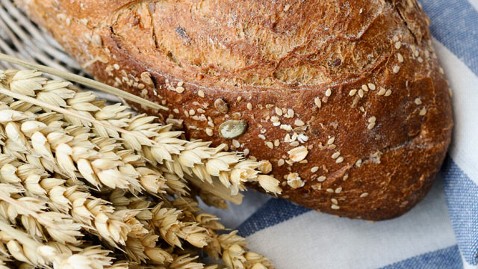Companies Not Telling the Whole Truth About Whole Grains

Image Credit: Getty Images
On Wednesday, the Center for Science in the Public Interest will petition the Food and Drug Administration to stop letting manufacturers label their foods "Whole Grain" when they really aren't and to start putting the percentage of whole grain on the packaging.
The government has encouraged Americans to eat more whole grains because they help prevent heart disease, but the FDA has never established a legal definition of what constitutes a whole grain.
"Multi Grain." "Whole Grain." "Whole Wheat." It turns out none of those terms have legal meaning. By law, only whole wheat bread must be made with 100 percent whole wheat, but any other wheat product can have as much or as little wheat as the manufacturer decides.
Click here for a complete guide to decoding ingredient lists.
The same thing is true for whole grain. According to Michael Jacobson, executive director of Center for Science in the Public Interest, a nutrition watchdog group, there is twice as much white flour as whole wheat flour in Old London Melba Toast. The story is true for Eggo Nutrigrain Whole Wheat Waffles too. According to CSPI, the waffles contain more white flour than whole wheat.
Sometimes companies even add coloring to give their products that beige whole wheat look, if they don't contain much whole wheat. Lance Whole Grain Crackers are one example.
"They add caramel coloring," Jacobson told ABC News.
Multigrain is another undefined term.
"The only thing it means is that it has more than one grain," Jacobson said. "It doesn't mean that any of them are healthful." In other words, the multiple types of grain could all be refined flour, not whole grains.
Some products brag that they have at least eight grams of whole grain per serving, but serving sizes vary, so some advocates say that can be misleading.
For example, a serving size of pasta is about 56 grams. So if there are eight grams of whole grain it it, that is only 1/7 th of the serving.
And yet foods with all of these claims often cost more, even though they may not contain much whole grain. The FDA wouldn't do an interview with us, but has been promising to define what counts as a whole grain since 1993, and is still studying the issue.
When ABC News contacted the companies some said they follow the existing FDA guidelines and others said they "continue to look for opportunities to add whole grain."
Click here to see the full statements of companies whose products were featured in the story.
So how can you choose wisely? Nutritionists say if the front of the package boasts "Whole Grain" make sure the first and most prevalent item in the ingredient list on the back really is whole grain.
Click here for a complete guide to decoding ingredient lists.